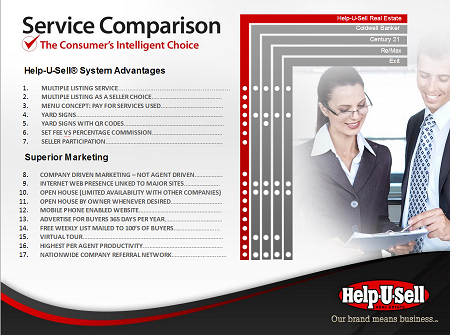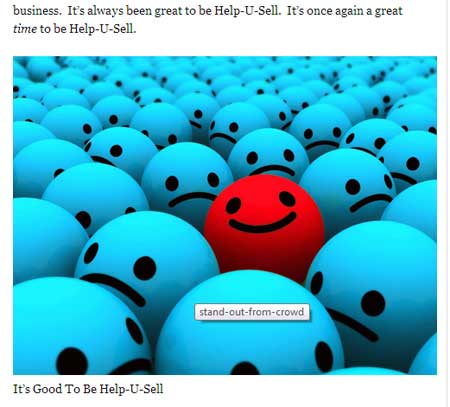(April, 2013 is turning out to be the biggest month we’ve ever had at The Set Fee Blog. With 7 full days left in the month, we have already had more visitors than in any month since our inception – which was September 2010. I think it’s mostly people getting ready for the BIG DEBATE coming up in a couple of days. Along that line, Good Luck, Dan! I know you’ll be great.)
I’ve been chatting with Michael Del Rosario, a real estate broker in Cerritos, CA, about a new agent directory website he is building, Agents For Less. He’s allowing agents and brokers who offer some kind of financial incentive to buyers and sellers – whether commission discounts, flat fee, fee-for-service, limited service, etc. – to be listed in a searchable, consumer friendly database. We were talking about categories today and it was a little un-nerving. I realized we have a bit of an identity crisis in real estate, and it all revolves around ‘Full Service.’
Consumers intuitively know what ‘Full Service’ in real estate means:
- Expertise/Consultation (preparation for sale, pricing, planning, staging)
- Marketing (which might include MLS, Internet, Open Houses, advertising, signs, flyers, etc)
- Representation/Negotiation (weighing offers, avoiding mistakes, anticipating next steps)
- Transaction Processing/Problem Resolution (making sure everything is done properly, handling problems as they arise)
The problem is that almost everyone in the business – traditional percentage-based brokers, discount brokers, flat fee brokers, fee for service brokers and so on – claims to do all of those things! The only brokers who might admit to NOT doing some of it would be self-described ‘Limited Service’ brokers or ‘MLS Only’ brokers. With so many different kinds of brokers laying claim to ‘Full Service,’ the term becomes meaningless . . . except that consumers don’t realize this. In the muddled mess of real estate company marketing, they have come to believe that ‘Full Service’ must also mean ‘Full Commission.’ >>> (and therefore, less than full commission means less than full service)<<<
Let that sink in for a moment.
Of course, nothing could be further from the truth. If your less-than-full-commission offering is based on a better, more efficient business model that enables you to be profitable while charging people LESS . . . then the debate is not about the level of service, it’s about how much the consumer wants to pay to sell a house. And here’s a news flash: s/he wants to pay as little as possible to get the job done quickly, efficiently and effectively.
If you aren’t charging a full percentage-based commission, you have to go the extra mile to make consumers understand that you actually ARE Full Service. It’s a nagging bit of marketing that has to be undertaken if you are going to do anything different with your fee structure than what your ordinary competitors are doing.
At the same time, ‘Full Service’ will become the imaginary club your competitors will wield to beat you in the marketplace. They will insist that you don’t provide ‘Full Service’ because you charge less . . . which taps into the consumers’ sub-conscious belief that ‘Full Service’ and ‘Full Commission’ are somehow intrinsically tied to one another. When Suzy Sixpence from Acme Realty says, ‘Help-U-Sell? Oh, they’re not Full Service . . . I know they’ll say they are, but they really don’t do anything for their sellers except put the sign in the yard. Sometimes they won’t even put you in the MLS – and of course, without that, you’re not even on the market! We all know you get what you pay for, and that’s really true when it comes to Help-U-Sell and the other discounters,’ . . . when she says that, she sometimes gets a head nodding Amen from her audience. But they are not nodding because what she’s saying about Help-U-Sell is true. They are nodding because they know there is a difference between Nordstrom and Wallmart . . . and she successfully uses that knowledge to twist perception in the real estate arena.
John Powell created the Help-U-Sell Service Comparison chart for use in Listing Consultations: (Note: this is a generic version of the chart used only as an example in Help-U-Sell training. Don’t try to draw any conclusions from this example – it’s totally fictitious) John has used it effectively for years – in fact, it is the centerpiece of his Listing Consultation. It graphically illustrates what his office does for sellers and compares it with what his four biggest competitors do. And, of course, it shows that he does everything they do plus a lot more. It neutralizes the ‘less than Full Service’ bomb quite effectively. Trouble is: you have to get face to face with a seller before you can use it – and if Suzy Sixpence has gotten to them first . . . .well, you may not get the opportunity.
(Note: this is a generic version of the chart used only as an example in Help-U-Sell training. Don’t try to draw any conclusions from this example – it’s totally fictitious) John has used it effectively for years – in fact, it is the centerpiece of his Listing Consultation. It graphically illustrates what his office does for sellers and compares it with what his four biggest competitors do. And, of course, it shows that he does everything they do plus a lot more. It neutralizes the ‘less than Full Service’ bomb quite effectively. Trouble is: you have to get face to face with a seller before you can use it – and if Suzy Sixpence has gotten to them first . . . .well, you may not get the opportunity.
Getting the opportunity is a function of marketing. We spend major marketing resources getting information about what we do for sellers for a set fee out into the marketplace. It usually takes a lot of mailbox marketing to install the message and, increasingly, a lot of SEO and Internet marketing. Your marketing is successful when a consumer, sitting across from Suzy and hearing her spout her nonsense, experiences the natural discomfort that occurs when the crap-meter goes off! When that happens, Suzy just looks . . . slimy.
Consumers: when you talk to real estate brokers about level of service and fee structure, use the four bullets above to evaluate what they say. If they don’t do something, ask why. (There may be a good reason, i.e. newspaper advertising. In many markets it does not produce results – defined as leads – and therefore is wasteful and ineffective.) If the fee seems lower than what others are charging, ask how they are able to do that and still be profitable. And ask what, if anything, you are giving up for the lower fee.
OR: just put this all aside. Remember that the shortest distance between point A and point B is a straight line . . . and call Help-U-Sell. You’ll get ‘Full Service.’ You really will. And you’ll pay much less because Help-U-Sell is a different, more efficient business model. We can charge less and still make more because we don’t run our offices like . . . well, like Suzy runs hers.
**PS: Help-U-Sell Brokers, why not get listed on www.agentsforless.com? It’s free and is just one more way consumers may be able to find you . . . and getting found is half the battle.

